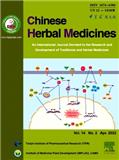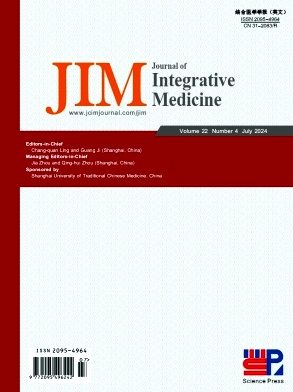数字中医药(英文)(Digital Chinese Medicine,DCM)(不收版面费审稿费)征稿须知及文章特色
1、投稿方式:在线投稿。
2、刊内网址:http://www.keaipublishing.com/dcmed
3、投稿系统:https://www.editorialmanager.com/dcmed/
4、出刊日期:季刊,逢季末月出版。
5、官网信息:本刊不收取版面费。
2024年4月22日星期一
《数字中医药(英文)》作者须知
Instructions for Authors
【2023年04期信息】
Instructions for Authors
Submission
Before submitting the manuscript, authors should carefully read the “Instructions for Authors” “Submission Walkthrough” available at the journal’s official website http://www.keaipublishing.com/dcmed under the “Submission” menu. The manuscript should be accompanied by a cover letter from the author who will be responsible for correspondence. Peer-review and refereeing are made online and anonymously.
Language
The manuscript can be submitted in either Chinese or English. Translation from Chinese to English will be offered to manuscripts with high quality.
Copyright
Upon acceptance of an article, authors will be asked to complete a “License Agreement” (see more information on http://www.elsevier.com/about/policies/copyright).
Permitted third party reuse of open access articles is determined by Creative Commons Attribution-NonCommercial-NoDerivs (CC BY-NC-ND) 4.0 license. More information can be viewed here (http://www.elsevier.com/about/policies/open-access-licenses). Not published manuscripts usually, will not be returned. Please keep your manuscript draft.
Conflict of interest
Authors are required to disclose any possible conflict of interest, and their statement of conflict of interest will be published at the end of the article. Authors are responsible for any conflict concerning their studies.
Ethics
Published research must comply with the guidelines for human studies and animal welfare regulations. When human subjects are involved, authors should state that subjects have given their informed consent and that the study protocol has been approved by the institute’s ethics committee. Authors should also state that animal experiments conform to institutional standards if any.
Responsibility
The authors take responsibility for their own published articles. The acceptance of your article does not mean that the editorial board agrees with your academic viewpoints, so you should take responsibility to explain any suspicion, or argument in your article. The editorial board has the right to amend your article in a reasonable way without informing you in advance.
Page charges
If the manuscript needs to be translated into English, we will charge the translation fee.
Original research article structure
Subdivision - numbered sections
Divide your article into clearly defined and numbered sections. Subsections should be numbered 1.1 (then 1.1.1, 1.1.2, ···), 1.2, etc. (the abstract is not included in section numbering). Use this numbering also for internal cross-referencing: do not just refer to “the text”. Any subsection may be given a brief heading. Each heading should appear on its own separate line.
Abstract
Structured abstract is requested, including objective, methods, results and conclusions, except for theoretical review. The abstract should state briefly the purpose of the research, the principal results and major conclusions.
To promote the culture of TCM, DCM requests a separate Chinese abstract. Please provide the exact Chinese abstract at the last part, corresponding to the English version. Foreign authors will be assisted by the editorial board.
Keywords
Authors are invited to submit 5 − 8 keywords associated with their paper.
Abbreviations
The full term for which an abbreviation stands should precede its first use in the text unless it is a standard unit of measurement.
Introduction
State the objectives of the work and provide an adequate background, avoiding a detailed literature survey or a summary of the results.
Materials and methods
Provide sufficient detail to allow the work to be reproduced. Methods already published should be indicated by a reference: only relevant modifications should be described.
Results
Results should be clear and concise.
Discussion
This should explore the significance of the results of the work, not repeat them. A combined Results and Discussion section is often appropriate. Avoid extensive citations and discussion of published literature.
Conclusion
The main conclusions of the study may be presented in a short Conclusion section, which may stand alone or form a subsection of a Discussion or Results and Discussion section.
References
References should be given in Vancouver style, using square brackets for the numbers in text. Please refer to the following examples, which are based on the formats used by the US National Library of Medicine in Index Medicus but has been slightly revised due to the specific requirements by our journal.
● Standard journal article: ESTEVA A, KUPREL B, NOVOA RA, et al. Dermatologist-level classification of skin cancer with deep neural networks. Nature, 2017, 542(7639): 115-118.
● Books: MURRAY PR, ROSENTHAL KS, KOBAYASHI GS, et al. Medical Microbiology. 4th ed. St. Louis: Mosby, 2002.
● Dissertation: CALMS RB. Infrared spectroscopic studies on solid oxgen. Berkeley: University of California, 1965.
● Unpublished material: LIU H, YE F, SUN Q, et al. Scutellaria baicalensis extract and baicalein inhibit replication of SARS-COV-2 and its 3C-like protease in vitro. bioRxiv, 2020. doi: 10.1101/2020.04.10.035824.
● Homepage/Website: eatright.org [Internet]. Chicago: Academy of Nutrition and Dietetics. Available from: http://www.eatright.org/.
Tables
Number tables consecutively in accordance with their appearance in the text. Please do not submit tables as photographs. The caption should be placed above the table. Place the annotations right under the table. The annotations should use the following symbols by the order stated below: *, †, ‡, §, ‖, ¶, **, ††. Be sparing in the use of tables and ensure that the data presented in tables do not duplicate results described elsewhere in the article.
Figures
Figures should be professionally drawn and photographed with high resolution; freehand or typewritten lettering is unacceptable. Ensure that each illustration has a caption. Supply captions separately, not attached to the figure. A caption should comprise a brief title (not on the figure itself) and a description of the illustration. Keep text in the illustrations themselves to a minimum but explain all symbols and abbreviations used.
The specific format of Chinese medicine terms
Chinese authors’ names
For easier identification of the authors' first name, family name and index, we adopted a Chinese naming system* (the authors have kindly agreed to permit its republication on DCM website), that is, writing the whole surname in capital letters and hyphenating the given name(s), whose first letter of syllable should be capitalized. For example, LU Shan and LU Shanshan.
Ancient book titles
The book title is written in Italics so that readers can easily identify it. Double quotation marks are not necessary. The English name or Chinese Pin Yin and the Chinese name should be listed for any classical TCM book. The first letter of each word should be capitalized.
For example, Inner Canon of Huangdi (Huang Di Nei Jing, 《黄帝内经》), Yi Zong Bi Du (《医宗必读》).
Name of Chinese herbs
We suggest using a Chinese Pin Yin name followed by a Latin name in italics format or English name in round brackets. For instance, Huangqi (Astragali Radix), Danggui (Angelica sinensis).
Name of acupoints
Name of the acupoint should be written in Chinese Pin Yin with an international coding in round brackets, such as Zusanli (ST36). The first letter should be capitalized.









